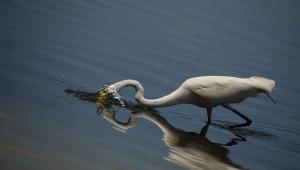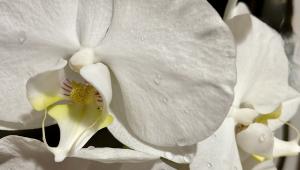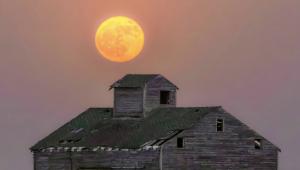I never know hat lies for me in the future maybe I'll be here soon. - Michael Courouleau
Locations; The Many Faces Of Berlin; History + Architecture = Great Photo Ops
Berlin is a vibrant city, alive with a history, culture, and counterculture all its own. I didn’t expect to fall in love with it, but did. Interestingly, everywhere you turn in this metropolis you see huge derricks craning their necks in the midst of constructing yet another building. While many scenes may reflect this burgeoning vitality, there are countless views free of any construction, letting you take in the full palette of flavors and textures that define Berlin, Germany’s capital.
Berliner Dom, At Dusk |
|
 |
|
|
If this is your first visit to Berlin, you’d do well to find a hotel in or near the heart of town, in the Mitte (Central) district, one of several districts that make up this city. That said, getting anywhere is fairly simple, practically around the clock, with a public transit system consisting of buses, surface transit (S-Bahn), subway (U-Bahn), and, in East Berlin, trams (cable cars). Failing that, there are always taxi cabs. Private shuttles are also available but may be more expensive and usually best left for trips to and from the airport, although public transit does an amazing and efficient job for a lot less. I purchased a three-day transit pass toward the end of my stay, and that quickly ferried me to Tegel, the city’s main international airport (soon to be replaced by a much larger facility).
Public transit aside, Berlin is a walking city, so come prepared to hoof it. However, you may feel—and rightly so—that the many bicyclists that flock the streets to and from work own the sidewalks. When you stop to take pictures, keep an eye out for them.
Brandenburger Tor |
|
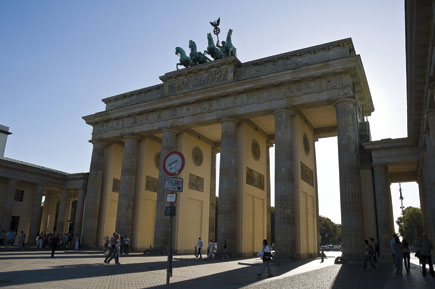 |
|
|
History Was Made Here
Yes, the Cold War may be over and the city is unified. But the natives still view it as East and West Berlin, even though you and I may simply see it more as an ultra-modern city with a rich, if questionable, past. I spent most of my time in the Eastern sector.
Berlin’s architecture, like its culture, is a mix of old and new. Obviously the old is what we find most captivating, whether it dates back to the Cold War, World War II (WWII), or centuries past. Brandenburger Tor (Brandenburg Gate) represents a symbolic dividing line between East and West, although remnants of the Berlin Wall itself can be found elsewhere. Day or night, this iconic monument, which dates back to the 18th century and largely survived WWII intact, is worth a visit.
Deutsches Historisches Museum |
Neue Synagogue |
|
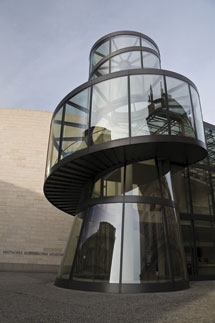 |
 |
|
|
||
This colossus is easily visible from the 19th century Siegessäule, or Victory Column, which is topped off with a statue of pure gold. It was relocated to this part of the city, in the Tiergarten (in what later became part of West Berlin), by the Nazis. The colonnade of gilded canons encircling each tier is comprised of the spoils of war. There are tunnels that crisscross the Grosser Stern roundabout leading to the monument. Entering these tunnels in the evening gives one the feeling of stepping into a maze of ancient catacombs, replete with the occasional bat.
Remarkably, some of the architecture dates back to the Renaissance, as in Spandau, formerly a separate town but now a district on the outskirts of Berlin. It was odd seeing the fortress Zitadelle Spandau (Spandau Citadel—flash forbidden in the museum) on one side of town balanced against the ultra-modern Spandau Arcaden, a huge mall in the heart of this suburb. The Citadel also has a bat research center with a thriving collection for your viewing pleasure (check before using flash). There’s also a music room, where you may chance to hear rehearsals on custom-made instruments. I arrived on the one Saturday of the month when they meet, and was allowed to join in. (You get to Spandau on the U7 U-Bahn line, which is an intriguing underground ride in and of itself—a sharp contrast from the S-Bahn.)
Siegessäule |
||
 |
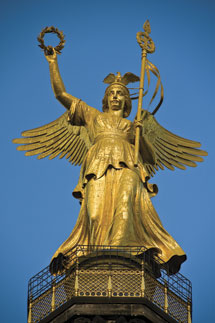 |
|
|
||
- Log in or register to post comments























